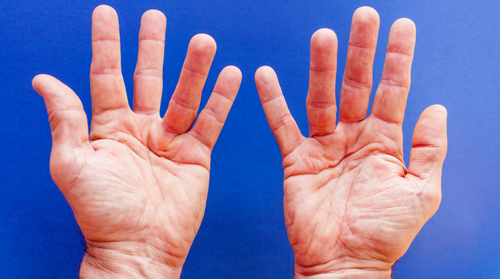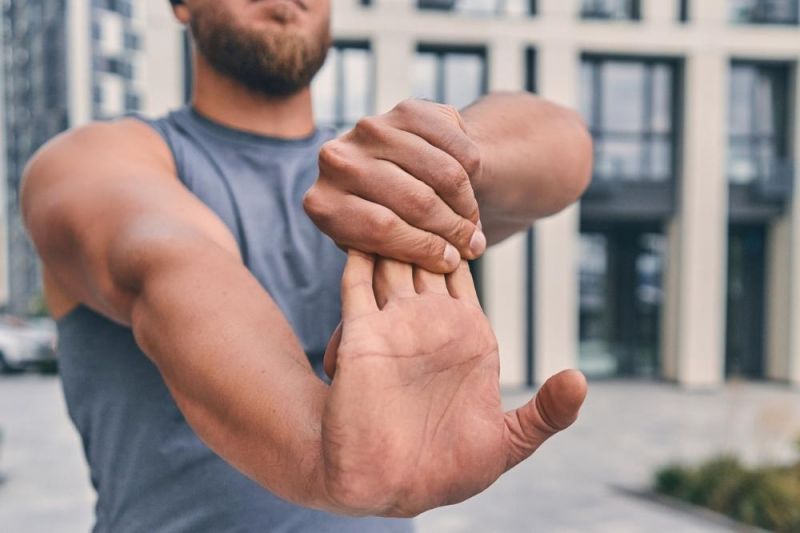
Photograph of two adult male hands against a blue background. The ring fingers of both hands are raised slightly because of Dupuytren's contracture in the palm
Dupuytren’s contracture is a hand condition that usually develops over years and can deform the hands. It typically starts as small lumps in the palm of your hand in line with your ring finger and little finger.
These lumps (called nodules) can be painless, itch, and are occasionally painful.
The nodules can get bigger over time and tough cords of fibrous tissue can form under the skin. The skin of the palm can become puckered or dimpled. Thickened cords can be seen running from the fingers to the palm of your hand.
If these cords contract or get shorter, they can curl your fingers in towards your palm. You can’t straighten them, making it hard to do everyday things you rely on your hands for.
The way Dupuytren’s contracture affects a person can vary. It can affect any finger, including the thumb, some may develop nodules, but their fingers don’t curl in. Others find their fingers pull completely against the palm, causing their hands to curl up.
Other conditions can also occur. The finger joints can enlarge, or the connective tissue of the feet or penis can thicken and shorten.
Causes
Dupuytren’s contracture tends to run in families, so it could be genetic. It is more common in people of Scandinavian or Northern European decent. This association may be why it is sometimes called Viking disease.
If you have it, does that make you descended from Vikings?
A genetic study published in 2019 found no evidence to support Dupuytren’s being a disease of the Norse.
Besides genetics, the causes are unknown.
Risk factors
Advancing age can be a risk factor. Dupuytren’s tends to occur more often in middle to later life. Males are three times more likely to get it.
People who smoke or drink a lot seem to be more at risk. So do people with epilepsy or diabetes.
Previous hand trauma or manual labour with exposure to vibration may be risk factors.
Diagnosis
No tests are normally performed or required. Doctors can often diagnose Dupuytren’s contracture just by examining your hands.
Treatment
In the early stages, gentle heat and massage can treat discomfort. Gently stretching the fingers away from the palm of the hand may help. Hand therapists, physiotherapists, and occupational therapists can provide help and guidance.

If the contracture is causing more serious problems, see your doctor. They might suggest one or more treatments. These can help but are not guaranteed to work. Gains made can sometimes reverse with time.
Treatments can include:
- steroid injections—to reduce inflammation
- collagenase injections—collagenase is an enzyme that breaks down collagen
- needle aponeurotomy—a needle is repeatedly inserted into the fibrous cords to break them up
- fasciectomy—surgical removal of some of the thickened tissue. Often a splint will be worn after surgery to straighten the finger/s.
